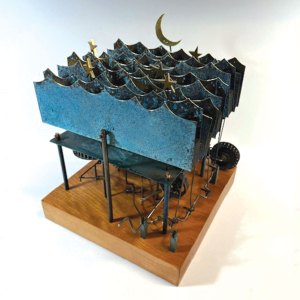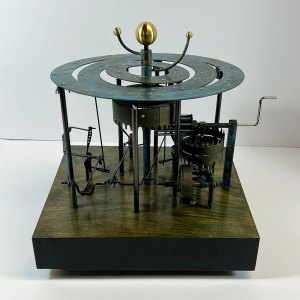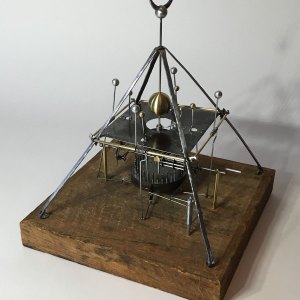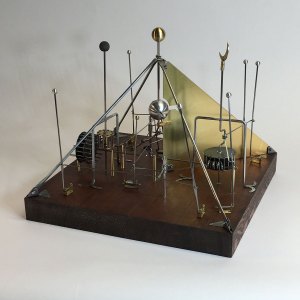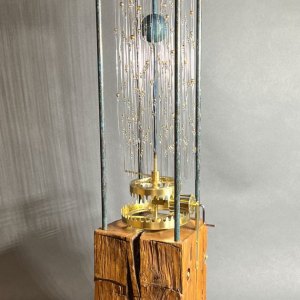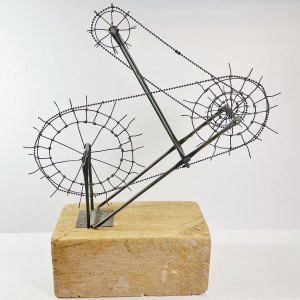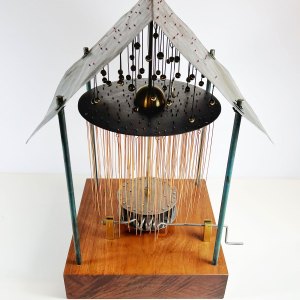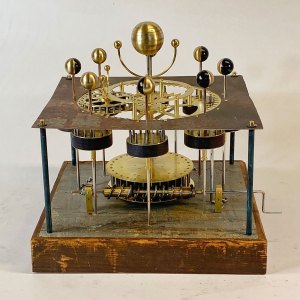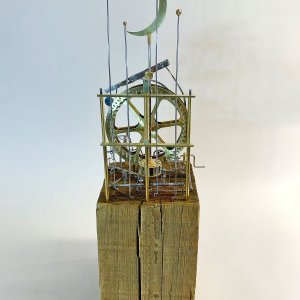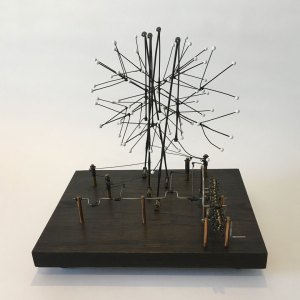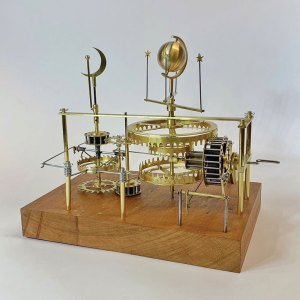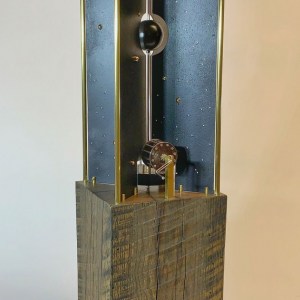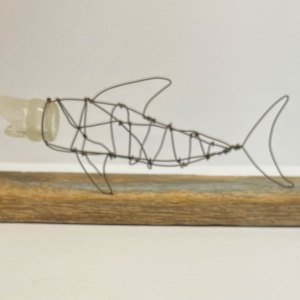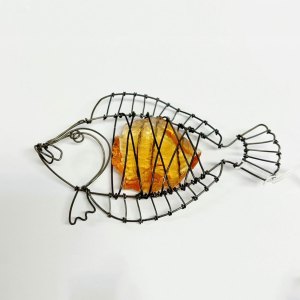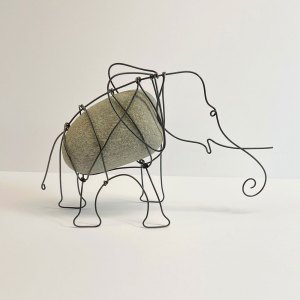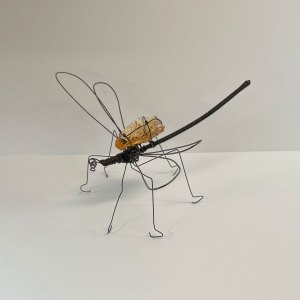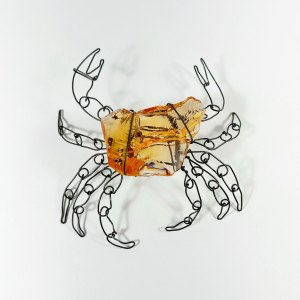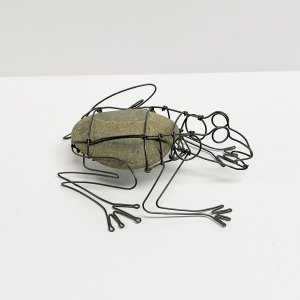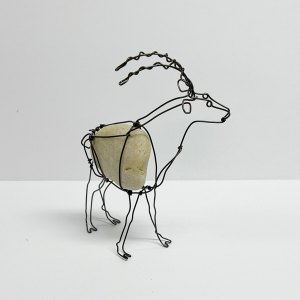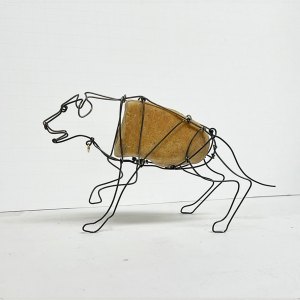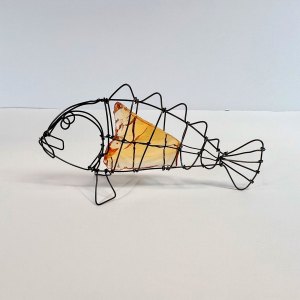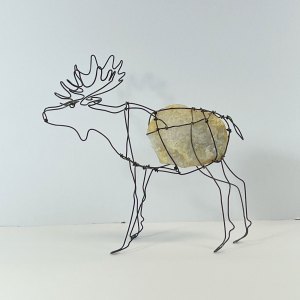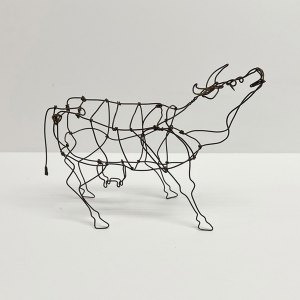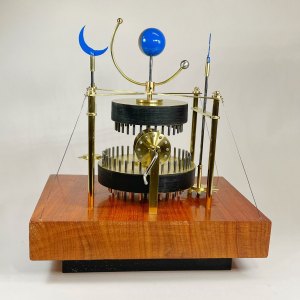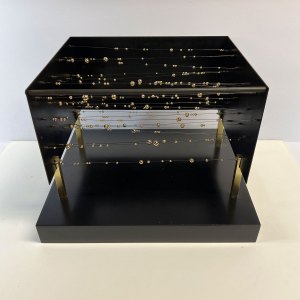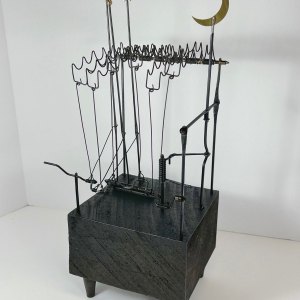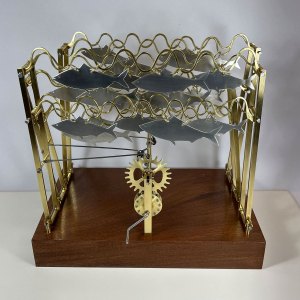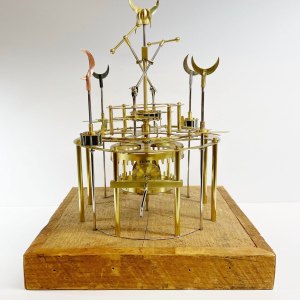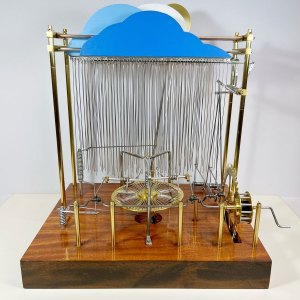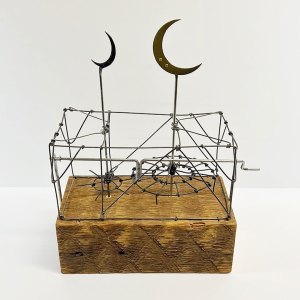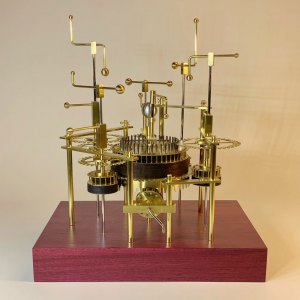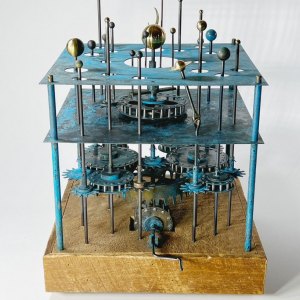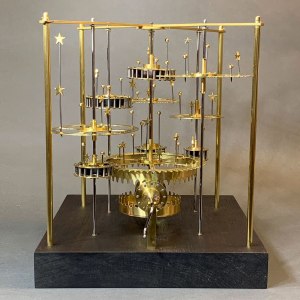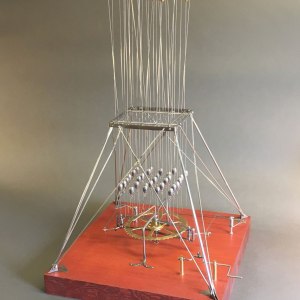Bruce Campbell, Starhenge, 2024
Category
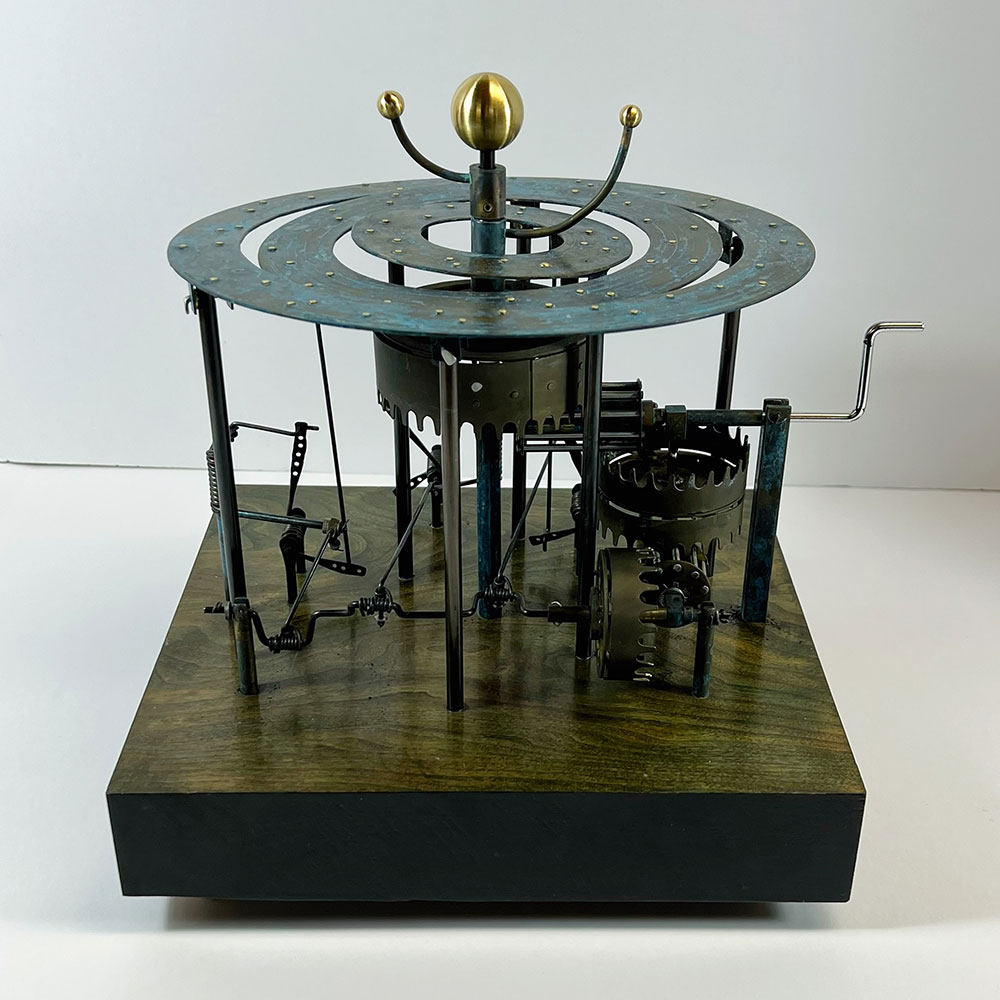
Bruce Campbell
My sculptures reflect my curiosity about how things work. They attempt to illustrate, in the simplest way possible, events and conditions of the natural world. In showing a falling star, a lunar eclipse, or a rainstorm, I am trying to represent my own understanding of these wonders while making these concepts both functional and intriguing. These sculptures therefore demonstrate, in minimalist and transparent form, my perception of the universe—how the universe might be visualized if moved by gears, levers, and basic mechanics.
My ideas for kinetic sculpture usually begin as a question. For example, how can I show a certain concept of the universe? I begin by making small sketches which focus on three-dimensional views. Once I have an approximate plan in place, I look for a suitable base, usually of found wood. At this stage I begin to design my sculpture at actual size on the computer so that I can accurately position gears, axles and turning points of levers. For the pieces that include gears, I must solve the problem of how to make these in wire. The very essence of a gear, even the simple ones I use, depends on precision. I do not use motors, preferring instead to have the viewer activate the mechanism by means of a crank. Most of the wire I use is either dark annealed steel or wire salvaged from coat hangers. To hold in place the moving parts of the sculpture, I fashion brackets out of brass or steel. I like the idea of using cast-off materials that at one time had another use and identity.

